John Hurrell – 12 December, 2024
Paine obviously loves rendering, mark making and collecting, and although he rattles on in his introduction about drawing tools and materials like a slobbering fetishist, don't be fooled. They ain't it. It is the manual dexterity with those drawing ingredients that he celebrates. The fun of muscular, ocular and mentally pictured co-ordination. A skill that very few contemporary artists possess.
For those who remember Ralph Paine’s solo shows and group participations of 2021, 2012 and 2010, this is a typical presentation of his elegant imaginative drawings, watercolours, collages and vast range of conceptual interests — the latter also indicated in his occasional written essays.
Paine obviously loves rendering, mark making and collecting, and although he rattles on in his introduction about drawing tools and materials like a slobbering fetishist, don’t be fooled. They ain’t it. (Nor is it the listed references in the bibliographies he often provides.) It is the manual dexterity with those drawing ingredients that he celebrates. The fun of muscular, ocular and mentally pictured co-ordination: a skill that very few contemporary artists possess, and a graphic sensibility that is found more in comic-book artists than single-panel cartoonists. Coupled with a wide range of passionate political and historical interests developped from much reading.
The show at Charles Ninow’s is in two parts, on opposite walls.
À la Leibnitz presents eight framed drawings of watercolor and pencil on the much shorter wall.
Leaves from a Pillow Book is quite different, a series of sixty-three unframed collages or drawings on watercolor paper on the very long wall. Arranged as 3 rows of 21 items. They are double-page spreads that serve as a sort of stabilising ‘frame’, with one side featuring ten pencil-ruled parallel lines. Of the other collaged, drawing or watercolor halves, three include Naples yellow as a base and sixty use cream, some of which are slashed or have pencil squiggles or texts. The ruled lines seem to be an invitation to the viewer to create an interpretation of the adjacent collaged shapes. They say: Hey, what do you think of this? Fill in (mentally) here. Details please.
Paine’s show’s title references the writing of Sei Shōnagon, a lady in waiting to the Japanese Empress a thousand years ago (and the basis of a Peter Greenaway film). Despite this, Paine is in a sense an unabashed modernist who loves the picture plane, and so is embedded in the beginnings of last century—but one who also loves copying the ‘amateur’ floral watercolors of his relatives. The book reference is a salient point, because it directs you to the drawings and bitsy texts he has collected, and their sequencing within the gallery space.
Despite the above, the main authorial reference Paine focuses on—through what are mainly pinned up fragments or sheets of text or image—is Gottfried Leibniz: as is obvious from the title. More important than say, the elegant angled loops of Paine’s own occasional calligraphy, is the persistent presence of this influential philosopher (and general polymath), who is discussed at length by Paine’s no.1 hero, Gilles Deleuze, in his 1988 treatise, The Fold.
In the Leaves from a Pillow Book our gushing fanboy presents his enthusiastic and occasionally spontaneous graphics, delighting in layered demonstrations of mental and physical playfulness: often based on weird stuff he has collected, showing off his considerable drawing skills, and endorsing his hero’s heros.
The viewers’ own pleasure in turn seems to lie in exploring these delicate juxtaposed images Paine throws in their direction, so they might eventually join them up with the collaged or drawn halves of other double-page spreads, perhaps mentally setting down some explanatory notions on the neighboring ruled lines. (Connections inviting viewer speculation.) Creating a new hypothetical order for the Future.
John Hurrell
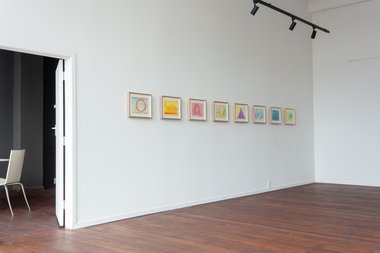

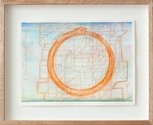
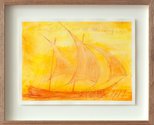
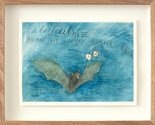
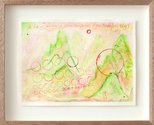

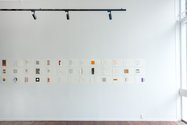
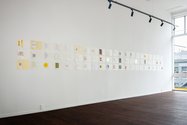
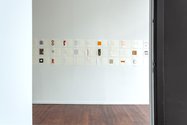
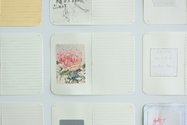
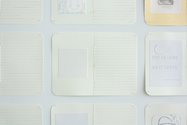
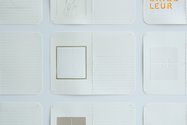
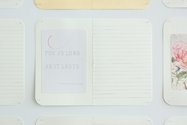
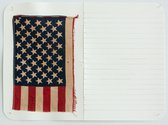
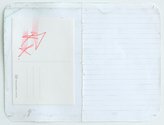
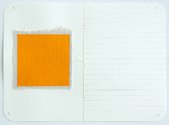
 Advertising in this column
Advertising in this column Two Rooms presents a program of residencies and projects
Two Rooms presents a program of residencies and projects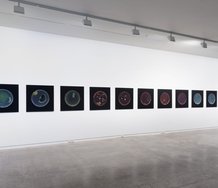
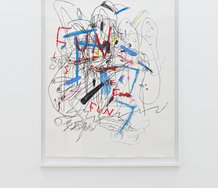

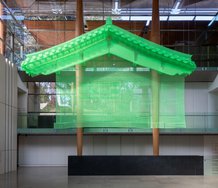
This Discussion has 0 comments.
Comment
Participate
Register to Participate.
Sign in
Sign in to an existing account.